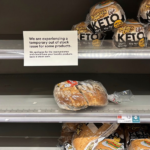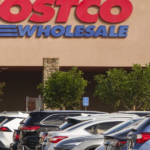With U.S.-China talks ending in essentially a tariff stasis, investors are once again looking at the economy to figure out just how much of a shock the tariffs are going to be.
“The system is incredibly, incredibly fragile,” Jeff Klingelhofer, managing director and portfolio manager at Aristotle Pacific, told Fortune. However, the amount of shock tariffs ultimately deliver will depend on who bears the cost, he said.
Typically, that’s the end user. Importers and economists have for months been saying that the consumer usually pays the cost of import taxes.
Except, Klingelhofer said, this time could really be different.
“It doesn’t have to be the U.S. consumer” that pays tariffs. “You’re likely to see companies ultimately bear more of the pain of tariffs than consumers.”
“The state of consumers is tapped out,” Klingelhofer said. However, “Corporate balance sheets are incredibly strong — margins have essentially never been higher in the history of humankind.”
Indeed, corporate profits as a portion of national income, a figure that never exceeded the single-digits until about two decades ago, surged to a record 13.6% in 2021. At they start of this year, they were just slightly lower, at 12.8%.
While the exact level of tariffs that companies, consumers and everyone else will pay is still up in the air, Klingelhofer says the direction is clear: “iIt’s going up notably.”
“I find it very hard to believe we exit this presidency with tariffs anywhere below the low teens, versus 1.7% of GDP,” their average level at the beginning of 2025, he said.









